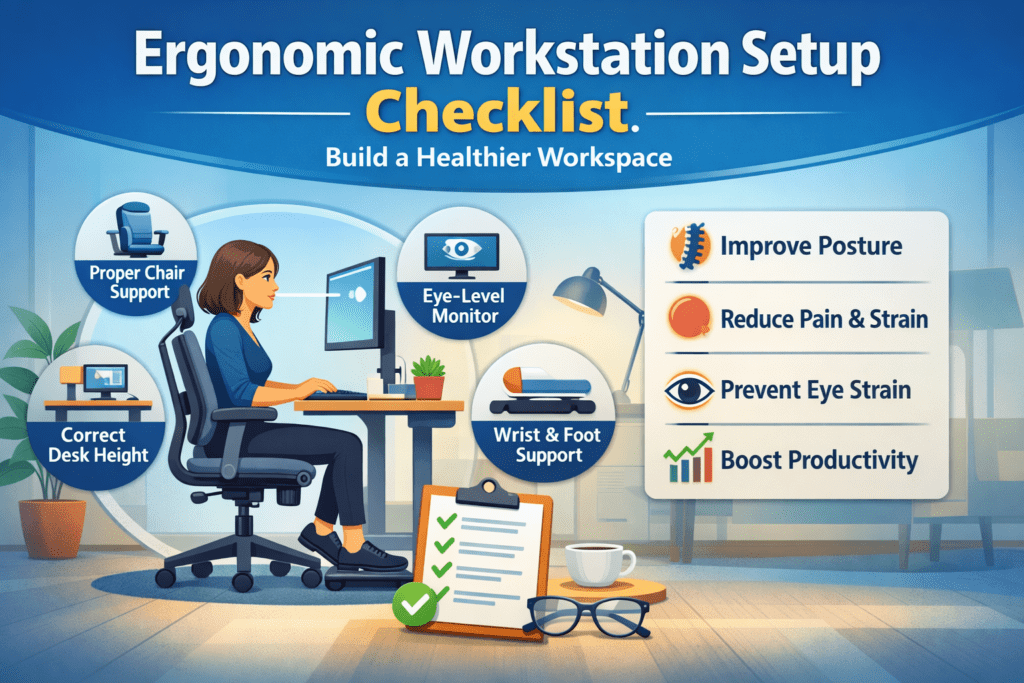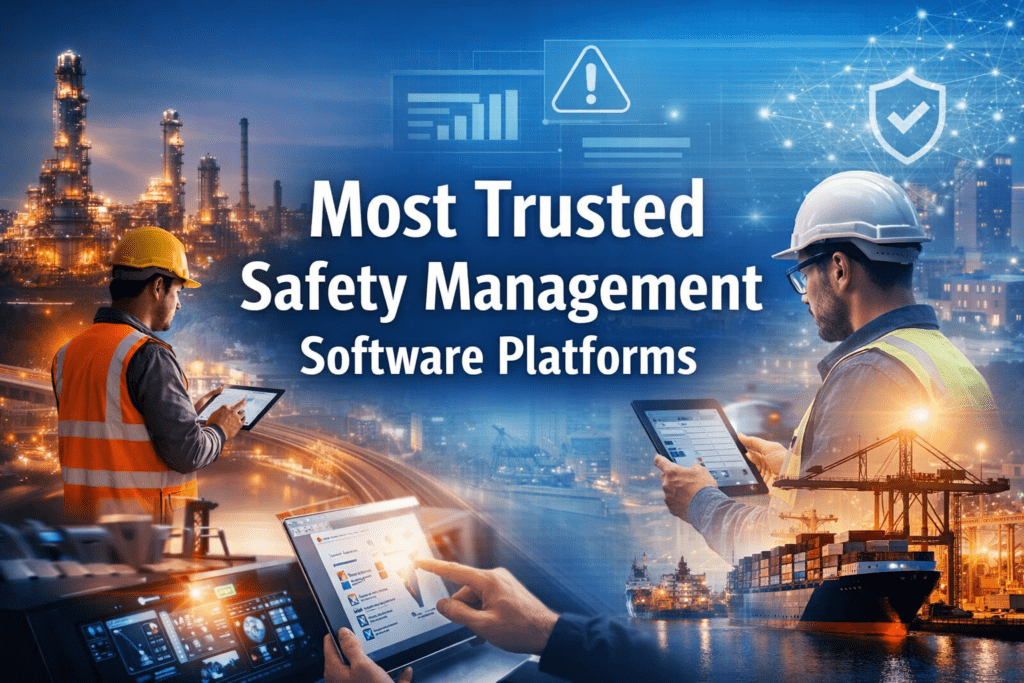AI in EHS: A Positive Disruption Shaping the Future of Safety
Introduction
Information is not knowledge, knowledge is not wisdom, and wisdom is not foresight. Each grows out of the other, and we need them all.
— Sir Arthur C. Clarke
Artificial Intelligence (AI) has captured the attention of various industries, but its impact on Environment, Health, and Safety (EHS) is perhaps one of the most significant yet underexplored. As AI evolves, its potential to positively disrupt EHS frameworks becomes more apparent. AI’s ability to streamline processes, enhance decision-making, and improve risk management could shape the future of EHS for the better. This blog delves into how AI can revolutionize EHS practices and the role CORE EHS services can play in this transformation.
Table of Contents

What is AI in the Context of EHS?
AI refers to machine-driven intelligence, capable of analyzing large volumes of data and making decisions without direct human intervention. While many industries, like healthcare and retail, have already embraced AI, the EHS sector is only starting to explore its vast potential.
At its core, AI in EHS involves using advanced algorithms and data-driven tools to enhance workplace safety, environmental monitoring, and compliance management. AI applications such as predictive analytics, machine learning, and automation can transform how EHS professionals identify risks, respond to incidents, and create safer work environments.
How Can AI Disrupt EHS?
AI has the potential to be a game-changer for EHS, primarily by improving efficiency, accuracy, and foresight. It can streamline data-heavy operations and offer predictions, minimizing human error and fostering proactive management.
AI-Driven Problem-Solving in EHS
AI systems can be tailored to recognize patterns and predict risks based on past data. For example:
- Image and pattern recognition could help detect hazards through video analysis.
- Data forecasting tools could predict incidents before they happen, based on historical safety records and environmental data.
Piggyback Learning Mechanisms
Current digital technologies in EHS, such as mobile applications, incident reporting platforms, and risk assessment tools, are laying the groundwork for AI’s future integration. These tools act as data reservoirs that AI systems can learn from, evolving their predictive capabilities over time.
This “piggyback learning” approach helps AI learn from existing data ecosystems, gradually building more intelligent systems that understand EHS-specific needs like hazard assessments, incident tracking, and compliance management.
Real-World AI Problem Types in EHS
AI can tackle various problem types that are central to EHS, such as:
- Classification: AI can classify hazards or unsafe behaviors by analyzing images or data patterns from safety incidents.
- Continuous estimation: AI can predict future risks by analyzing data trends in work environments, such as air quality or machinery performance.
- Clustering: It can group similar incident types (such as falls or chemical spills) to generate insights on risk factors or recurring patterns.
- Anomaly detection: AI can detect deviations in safety protocols, equipment performance, or environmental conditions, identifying risks before they lead to accidents.
- Optimization: AI can optimize EHS processes like asset management or compliance checks by automating tasks and improving performance through machine learning.
These applications can improve decision-making, reduce response times, and enhance safety protocols by constantly analyzing and refining data inputs from various EHS sources.
Partnerships Between AI and EHS
For AI to positively disrupt the EHS landscape, collaboration between EHS professionals and AI specialists is essential. These partnerships are necessary to leverage both AI’s technological capabilities and EHS experts’ on-ground experience.
Why Partnerships Are Crucial
The success of AI in EHS hinges on the diversity and richness of the data being used. The more comprehensive and varied the data, the better AI can learn and offer valuable insights. Partnerships between EHS software providers and AI developers can ensure that AI tools are fed accurate, industry-specific data. Similarly, collaboration between industries and AI experts can fast-track the development of tailored AI solutions.
This partnership approach ensures that AI doesn’t just function as an isolated tool but becomes a native part of EHS systems, learning continuously from data while evolving its functionality.
How CORE EHS Can Accelerate AI’s Impact on EHS
To maximize AI’s potential within EHS, tapping into industry-leading services is key. This is where CORE EHS comes into play. With a wide range of offerings, CORE EHS provides the foundational support necessary for a smooth AI integration into your EHS framework.
- Safety Management Consulting Services
CORE EHS’s Safety Management Consulting Services offer expert insights into optimizing safety programs. As AI begins automating data analysis and incident reporting, these consulting services ensure that human oversight remains sharp, interpreting AI-generated data effectively and enhancing overall safety strategies.
- Safety Staffing Services
AI may optimize certain safety functions, but skilled professionals remain essential. CORE EHS’s Safety Staffing Services can help businesses supplement their workforce with experienced EHS personnel who are capable of working alongside AI systems, ensuring smooth transitions and maximizing AI’s impact.
- EHS Training and eLearning
AI-based systems need well-trained teams to manage and interpret data. With EHS Trainings and HSE eLearning, CORE EHS ensures that EHS teams are equipped with the latest knowledge to understand and apply AI-driven insights, promoting a culture of safety in AI-integrated environments.
- AR/VR and Simulation for Safety Training
To complement AI’s predictive capabilities, CORE EHS provides AR/VR and Simulation tools. These immersive training environments allow workers to simulate potential hazards in a controlled setting, preparing them for real-life risks that AI systems may predict.
- Safety Software and Advisory
Safety Software is crucial in capturing the data AI systems thrive on. CORE EHS’s software solutions integrate seamlessly with AI platforms to offer a unified system for tracking safety incidents, reporting near-misses, and monitoring compliance. Their Safety Advisory services further assist in tailoring AI solutions to meet specific organizational needs.
- Specialized Services Like Scaffolding
With AI’s capability to predict anomalies, CORE EHS’s Scaffolding Services ensure that structural safety is maintained. AI can detect early signs of wear or unsafe assembly, and CORE EHS can offer expertise in mitigating risks associated with scaffolding.
By leveraging CORE EHS’s services, organizations can ensure that AI-driven safety solutions are implemented smoothly, maximizing the efficiency, safety, and foresight offered by these advanced systems.
Conclusion: The Future of AI in EHS
AI holds immense potential to disrupt and enhance EHS practices positively. As we continue to gather more data and refine AI’s learning mechanisms, the technology’s ability to predict, analyze, and prevent incidents will only improve. The key to success will be fostering collaborations between AI innovators and EHS professionals while allowing both groups to focus on their respective strengths. Services like those provided by CORE EHS play a critical role in this transition, offering essential support that ensures AI’s positive disruption aligns with practical, on-ground needs.
By embracing AI’s role in data-driven decision-making, EHS managers can stay ahead of the curve, ensuring a safer, more efficient future for workplaces worldwide. The question is no longer if AI will disrupt EHS—it’s when.
Share Blog
Recent Posts:
FAQ's
AI helps automate and improve decision-making in EHS by analyzing vast amounts of data, identifying patterns, and predicting future incidents or risks.
AI can detect anomalies, predict equipment failures, and identify unsafe behaviors before they result in accidents. By continuously analyzing real-time data, AI can help EHS professionals make more informed decisions.
Examples include anomaly detection in machinery, predictive maintenance, automated incident reporting, and real-time environmental monitoring for things like air quality or hazardous chemical levels.
No, AI is a tool to enhance the capabilities of EHS professionals. It helps automate data-heavy tasks, providing more time for EHS experts to focus on critical safety decisions.
As AI technology evolves and becomes more integrated into EHS systems, it will play a critical role in predictive safety, real-time monitoring, and data-driven decision-making, ultimately enhancing overall workplace safety.












